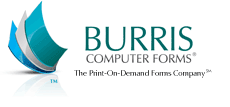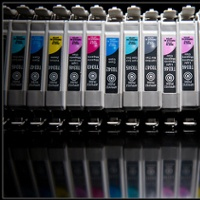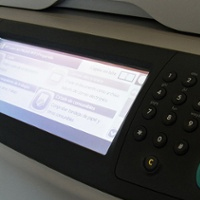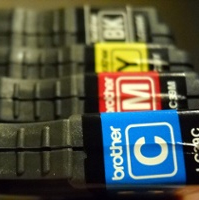How To Use a Laser Printer to Print Your Own Forms & How They Work
by Chelsea Camper | Last Updated December 30, 2015There’s some basic information about your printer that you need to know when you start printing your own forms. In this post we’re going to help you understand how your laser printer works. We won’t be telling you how you can build a laser printer from scratch or even how to fix one up, but the post will help you figure out which print jobs you should be running on your laser printer.
Here are a few things we’ll be going over:
- What makes a laser printer a laser printer
- How does a laser printer print
- What kinds of print jobs should I run on my laser printer
Let’s get started!
What Makes a Laser Printer a Laser Printer?
a Laser Printer?
Laser printers are different than inkjet printers for several reasons:
- Laser printers use “toner”
- Laser printers can get hot when they’re printing
- The printed image from a laser printer sits on top of the paper
Laser printers can also have a lower quality print than inkjet printers because of the way that they print (which we’ll get to in a moment). However, toner is usually less expensive per sheet than ink is. For this reason many offices use laser printers to print out big print jobs that don’t require a lot of detail.
Now let’s look at how a laser printer prints.
How Does a Laser Printer Print?
Once your laser printer is loaded with paper and you’ve sent your print job to the printer, the laser printer first picks up the paper from the selected tray and rolls it to the starting position. Before the paper even gets to the drum roller, the drum is positively charged and has an electronic image drawn on it by a tiny negatively charged laser.
After the image is set, the drum is coated in positively charged toner powder, which quickly adheres to the negatively charged areas of the drum where the image was drawn by the laser. Paper is then rolled across the drum with a strong negative charge that pulls the toner off of the drum and affixes it to the paper.
Finally the paper is sent through a fuser which, well, fuses the toner to the paper by heating it up. This is where the heat aspect comes into play. Most of the time you can print your label sheets through a laser printer without a problem unless your printer is printing at a slow speed. That’s when things other than toner can start to melt!
Since the toner is placed and fused where it fell, there is little to no blending that occurs during the printing process. In order to get full color prints to look natural and smooth you need some blending. With a laser printer, there isn’t much room for blending colors together.
What Kinds of Print Jobs Should I Run on My Laser Printer?
Now that you know a little bit more about how a laser printer works, let’s take a look at what kinds of print jobs it would be good at printing:
- Extra large print jobs (since laser printers are typically faster and less expensive to print with)
- Print jobs that don’t contain full color images
- Print jobs that don’t require printing at slow speeds
Here are a couple of things you probably shouldn’t print on your laser printer:
- Large full color photos
- Print jobs that require you to auto duplex label sheets (you can order pre-printed label sheets so that you only have to print one side)
- Inkjet paper (the coating on inkjet paper can melt in the fuser and damage your printer!)
Do you have any other interesting laser printer tidbits?
Learn more about printing your own with our Getting Started Guide!
Image: oskay
Research: HowStuffWorks





